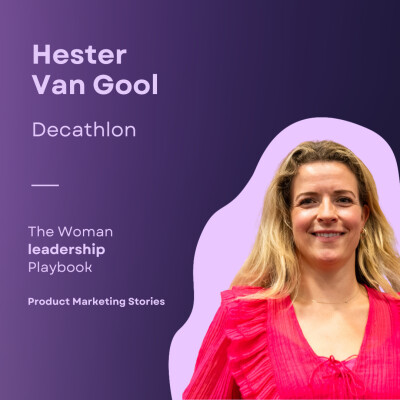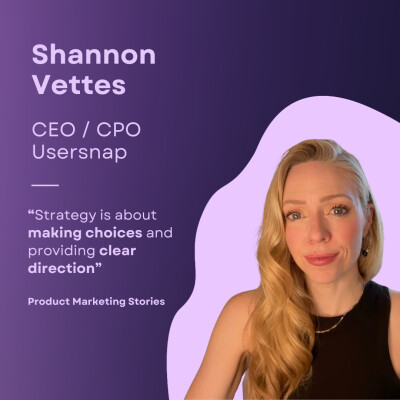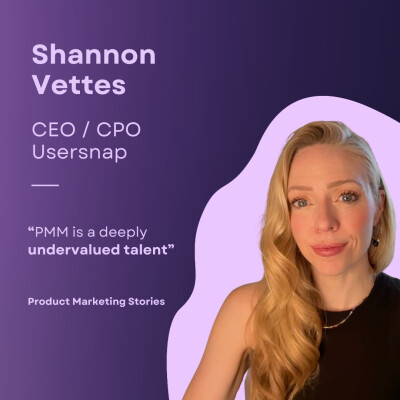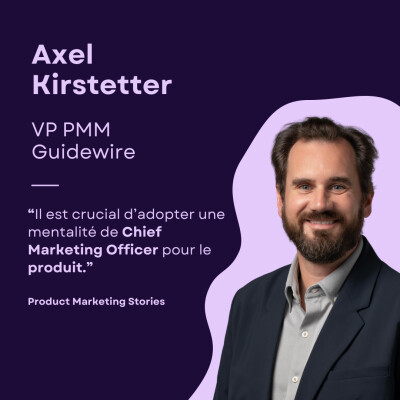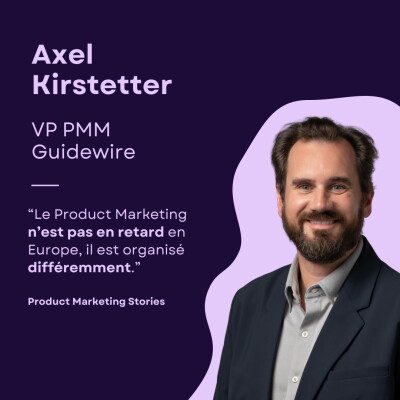- Speaker #0
Hello, we are here today with Ashley, Director of Design Foundations. We are going to talk about fascinating subjects like how to foster brand desirability, how to build a culture of design. Hi Ashley, how are you?
- Speaker #1
Hello, I'm well, how are you?
- Speaker #0
I'm fine, very happy to be here with you today.
- Speaker #1
Yeah, same.
- Speaker #0
To start, can you present yourself and tell us what do you do today at Decathlon?
- Speaker #1
Sure. Well, my name is Ashley Reed. I'm the director of design foundations at Decathlon. And design foundations is comprised of three distinct areas. We have our design system team, which is our design system called Vitamin Play. And that's our front-end UI, our user interface design, and our front-end code for our digital touchpoints within Zecathlon. I also lead our global digital experience insights team, which is comprised of our NPS program for digital and also our user experience research operations. And together that makes up our atomic insights system. So that's qualitative and quantitative research insights. It's also our NPS insights, our Net Promoter Score insights. And last but not least, I lead our design operations as a function. Design operations within Decathlon is about how we orchestrate people and process to amplify the value of design within Decathlon.
- Speaker #0
Fascinating. Yeah,
- Speaker #1
thank you.
- Speaker #0
So what has brought you to Decathlon?
- Speaker #1
So what brought me to Decathlon is an answer in two parts. So what brought me to this role? Obviously I just told you what I did here. This is actually an incredible scope and opportunity within the design industry. It's what I believe to be a scope that I would not find easily somewhere else. So the role itself was extremely exciting. I also happened to work previously with our VP of design, so having that relationship with the new boss already is obviously something that is a privilege and hard to come by. And what brought me to Decathlon as a brand, as a whole, I think is first of all the sustainability and the way Decathlon is really putting their money where their mouth is. When it comes to sustainability, this is something that surprised me greatly when I was learning more about Decathlon. And also the physical products, the product innovation that happens at Decathlon is incredible and very impressing. So that's what brought me here.
- Speaker #0
Super interesting because you have worked also in many companies. Today Decathlon, but also in the past in Adidas and Nike, if I'm not wrong.
- Speaker #1
Correct, yeah.
- Speaker #0
And so I think you have many things to say about what is a desirable brand, what is, how do we build a preferred, a loved brand. And I would like to hear more about what is your thinking about what is a desirable brand and how do we foster this desirability and preference?
- Speaker #1
Yeah. So for me about brand desirability, that's really about when I first think of it, at least many things, but my first thought is about the sense of belonging. And I'm reminded of the time that I first got Adidas shoes. So my first pair of Adidas shoes were Sambas, black Sambas. And this was many years ago. And that's how old I am to see a fashion trend. Repeat, but my family had just moved to a new area in the U.S. And these samba shoes were like the shoes to have in this new school. And obviously being new, you want to belong, you want to fit in. And my parents were kind of not really... you know, interested or keen to buy a new brand new pair of shoes because I already had very nice shoes. And for the fashionistas amongst us, they were black Mary Janes, very nice shoes, totally fine, didn't really need a new pair. But for me, it was not specifically about the shoes or the function of the shoes. It was really about feeling like I belonged in this new place. And so I actually got the black Sambas, but they were I had found them in a secondhand market and I was so excited because I was like, okay this is my chance and this is not something that my parents have to stretch really big and dig deep into their wallets to purchase. It's something that is, you know, a lower bar for them. I still get what I want, that sense of belonging. I don't even think the shoes themselves fit properly but at the end of the day it worked out.
- Speaker #0
So it's mainly about how you perceive a brand and the image like it gives you from an external point of view. Yeah,
- Speaker #1
I think it's that feeling that you get, right? It's not specifically, at least for me, not specifically about an image and maybe to some degree it is, but it's about the feeling and maybe you get that feeling because you are projecting a certain image. But for me, it's much more about the feeling. rather than the projection of the image.
- Speaker #0
Super interesting. And so how do you today would explain the brand desirability of the catalog?
- Speaker #1
So the brand design reality of Decathlon is actually an extremely interesting part of my experience with joining Decathlon. Because when I was leaving Adidas, which is obviously a very well-known brand, I was a bit nervous somehow to tell people, oh, I'm going to Decathlon. Because, of course, Decathlon is... incredibly well known in France first and foremost but lesser known in in places like the US where I grew up so I was I was a bit nervous somehow to to tell people but when I started telling people especially in my in my personal a realm, let's say, here in Amsterdam, people were so excited. It's the first time that people were saying like, oh my god, I love Decathlon. I love that brand. And it was a reaction that I never got actually when I was joining the other brands that I've been with previously. So it was so amazing to see this deep passion about Decathlon. And it was really coming down to like following up and... asking deeper questions it was really about the physical product and the people the experiences that people have had with decathlon. Many of them also have had wonderful experiences in the source as well but it was you know it's always coming back to the physical products and actually just yesterday I had two neighbors meeting in the streets and both of them have small children the same age and one of them was walking down the street with a b-twin bike and the other one was asking about the bike and the neighbor with the bike was going on and on about how great it was. And then he made a joke to the other neighbor and said like, yeah, you should buy this bike too, because then Ashley gets to keep her job.
- Speaker #0
That's incredible because it's true that... At the end, products is not only functional, but it's always how we give product more than its functionality, but the experience, the feeling that will make people stick with the brand and willing to also speak about it to others. And I think it's the most important thing to do as a brand, be able to create a community and people that are.
- Speaker #1
the best the best ones to talk about you at the end absolutely and that really like is a nice segue into brand preference uh because of course you know as you get older and if you talk specifically about sports your brand preference becomes about how do you physically feel in this product like what is the experience that you're having um and if your tights are falling down or if your shoes are giving you shin splints that is It's clearly not a great experience with the physical product and ultimately then the brand. So then your preference becomes actually what makes you feel good physically and mentally through your movements and through your sport.
- Speaker #0
And do you think there are like pitfalls or things to avoid to generate the brand preference, generate this feeling, this experience?
- Speaker #1
Yeah, so I think there's a couple of things. Speaking specifically about Decathlon, I think it's very difficult for consumers and transparently myself included to understand all of the brands, like all of the sub-brands within Decathlon. So I think a lot of people, they... don't realize actually how much they prefer decathlon because they think that they they are preferring a sub-brand of decathlon and don't even realize it so that's one thing um that i think uh can be tricky um The other thing is when brands are not staying close to their mission, where they're too busy focusing on what are other people doing or looking around rather than like having an inward view of what they're doing really well. I think it can be a pitfall because you move away from your mission.
- Speaker #0
It's interesting what you say because it's true that of course there are many brands today and we used to really compare ourselves to the competition, whether I'm a product marketer, you're a product designer, you work in design and I'm sure you, we always look to what others are doing and we try to copy and to see what is working well to implement it ourselves and it makes it difficult to make us unique. What is your approach on How to deal with the competitors and how to stand out versus the others?
- Speaker #1
Yeah, it's a great question. So I think it's quite important to consider what we're doing and not what our competitors are doing. It's good to be aware, of course, but we can channel that awareness to challenge us to be better for ourselves. I'm reminded of the Simon Sinek example of Microsoft versus Apple. He had spoken at two different leadership conferences, one for Microsoft, one for Apple. He said that at Microsoft, 70% of the executives spent 70% of their time talking about how they were going to beat Apple. And at the Apple Leadership Conference, 100% of the executives and 100% of the time was talking about how they can actually meet their consumer needs. Which is incredible if you think about, okay, you're focusing, you're showing up to beat yourself and not beat the competitor. It's an incredible way to just harness that focus to be better for yourselves and eventually along the way. Hopefully, of course, you beat your competitors at the end of the day. But if you also think about looking too much outward about what other people are doing, you're always going to be playing behind the ball. You can never innovate. You can never look forward. You're just simply showing up too late to even play the game. So it's quite important to keep that focus. inward and harness the healthy competition, but not as a copy, but as a drive to be better for ourselves and our consumers.
- Speaker #0
So what you say is mainly to be user-centric and to really be focused on... Who are our users, our clients, our consumers? What are their needs? What do they expect from us? And really try to build this relationship with them in order to answer to their needs.
- Speaker #1
Exactly, exactly.
- Speaker #0
And do you have best practices to really foster this brand preference and just not forget but put competitors aside and look? and look at our users and look at their needs and to really perform ourselves.
- Speaker #1
Yeah. Of course, going beyond the usual suspects of being authentic and knowing your audience, I think something that's really important that we ask ourselves and brands in general ask themselves are why are they doing it? Are they doing it because it serves their mission and their purpose and their consumer need? Or are they doing it because the competition is doing it and they feel that they need to do the same thing to play in the field? So always asking this question of why. And using our critical thinking skills about why we're doing things are incredibly important. You know, as a parent, I really appreciated when my child or children have grown out of this constantly asking why phase. Of course, it can be very annoying. Yes.
- Speaker #0
I don't have time for that yet. I can assume.
- Speaker #1
It's tiring. And sometimes you just want a bit of space and you don't want to think about why or explain why. However... When we're talking about a brand and a business, we should always be asking ourselves, why are we doing this? Does it serve our purpose and our mission and our consumer and business needs?
- Speaker #0
And do you have other advice to not fall in this trap? For me, I think it's easy to say, okay, we have to look at ourselves to understand our audience, to ask why, et cetera. But it's difficult to really implement it in a day-to-day basis and to ensure that everyone in the room have the same philosophy, let's say. So do you have... I don't know if it's tricks or tips to really being able to implement it, yes, in a day-to-day basis.
- Speaker #1
Yeah, so for me, it's about understanding the mission and also being able to tie your work directly to that mission. If you can't really directly tie your work to it, you shouldn't be doing it. So, you know, if you... are inspired to do something because the competitors across the street are doing it, but it doesn't, if you can't logically tie it back with a business purpose to your mission, then you probably shouldn't do it.
- Speaker #0
How do you think design can really help to foster brand preference? Because design, it's a lot, it's what we see, it can be physical, digital, so... What's the place of design in all this?
- Speaker #1
Yeah. So I think for us within design, it's really about putting the consumer first and always putting their needs first, understanding their needs and their wants and their desires and their intents, and putting those at the center of everything that we do. So really showing up together with our products and our tech counterparts, bringing that consumer-centric view. and challenging ourselves. How can we meet the business need and the consumer needs?
- Speaker #0
I would like to talk with you about today at Decathlon, we are moving also, we are really transforming the brand, moving from a retail-first company to a company which is both retail and digital. What are the main challenges you see for your team from the design perspective?
- Speaker #1
Yeah, so I'm reminded of the recent digital leadership kickoff, annual kickoff, which was two weeks ago. And Barbara came, our CEO, and spoke about digital being a philosophy of how to manage a company. And to me, that really meant that Decathlon is not not retail and it's not not digital. It's both. So exactly as you've just said, I feel that digital is an enabler of the modernization of Decathlon. I feel that digital allows people within Decathlon to focus on their strengths and to play in the position that they're best suited to play in. So, for example, if we think about physical product with digital, with modernizing, with bringing best practices of digital to physical product, we in digital are playing in our playing field, in our space where we're excelling, physical product. no longer has to play in that space. They can play fully into physical product innovation and not have to worry about being the best in physical product and in digital. It's really about creating this team that we're all showing up together and playing in the positions that we're best suited to play in, really as a team. So I think the biggest challenge is how do we all come together as that team? How do we understand the positions that we're playing in and really how to play in each other's strengths? And with any team that's starting up, you have to get to know each other. You have to build trust, the understanding to really show up and play together, I think, is the biggest challenge.
- Speaker #0
You're right. At the end, it's a human challenge.
- Speaker #1
100%. We're all just humans, except for the AI team.
- Speaker #0
And so how do you build a culture of design? Because today it's also one of your main roles to really foster and to create this team. How do you do it?
- Speaker #1
Yeah. So, you know, going back to what I said earlier about, you know, building this culture of consumer first, it is really about how we as design show up together with our counterparts. So. We're driving this consumer-centric, this consumer-first view from the design perspective. But when we do that, we also, in design, need to be able to speak the same language as business is speaking. We need to be able to speak the same language as tech is speaking to really be able to achieve the impact that we're going for in putting the consumer first. And of course, if design is off in a silo. Making a starship that's totally disconnected from the business or the tech feasibility of something, we're not going to have the impact that we're going for. We make impact as a team, and that really means that we need to meet our counterparts where they are.
- Speaker #0
Okay. How do you do it today? You have to make sure that all teams can spend time with all the stakeholders. And at Decathlon today, there are many, many different product teams, design teams, retail, digital, etc. How do you manage it? How is the organization of the design team aligned with these challenges?
- Speaker #1
So we, for the most part, I would say are able to follow the digital domain setup or business units maybe for... The outside of decathlon people watching this. But we are arranged in a vertical sense, but also horizontally. And so depending on the focus of the team. So if I use the... The example of e-commerce, we've got design leadership in e-commerce, product designers, UX researchers and content designers dedicated to e-commerce in a vertical. But what you've got underneath of e-commerce and all of our other domains, our business units, how you decide to say it inside or outside of Gathelon, you have more of a horizontal focus as well. So for example, this is the area where my team is. We're focusing on design systems. So UI, user interface design for everyone, not just e-commerce, for value chain. or for the other business units as well. So we're vertical and to some degree horizontal and overarching. We are led by one design leader, our VP of design, Vinnie Hendrix.
- Speaker #0
Okay. How many people is today in the design team?
- Speaker #1
In design, we're around 60 internal employees of Decathlon. And then, of course, we have our external partners, freelancers that also work for us. And that's around 50 people.
- Speaker #0
We've talked about the design team, how to create a culture of design, product design. How do you think that the product design and this culture can really foster the brand preferences that we were talking before?
- Speaker #1
Yeah, great question. So again, for us, it's really about putting the user first, the user at the center of everything. And that means in digital products, in physical products. And so if you think about the experience, that feeling that someone is getting, in our digital touch points. Design is putting their needs first, ensuring that their needs are met. Clearly, if your needs are not met in digital, in e-commerce, for example, then you're not going to prefer that. You're going to prefer to go where your needs are being met. And yeah, it's a fast-moving world. So we need to make sure we're on top of our game and putting those users first. Otherwise, they're going to find someone else.
- Speaker #0
Interesting. Thank you. It's interesting to put it that way because sometimes we think that it's a complicating thing and very complex to do but at the end it's putting the consumer, the end user at the center of all what we think and it's interesting because It's not so complicated in theory, but doing it on a daily basis and putting it in the center of the strategy is the most difficult, I think.
- Speaker #1
And I mean, I definitely don't want to downplay the challenges that people might face, ourselves included with tech feasibility and things like that. We always want to play with this Venn diagram of desirability, viability and feasibility. So is it viable for the business? Is it desirable for the consumer, but is it also feasible from the tech point of view? Sometimes those three areas are just not matching up, and that's where it's really important, where you find that common ground together, because the users will feel that in their digital experiences.
- Speaker #0
And do you have a big achievement that you are very proud of from your past? all your career, whether today or in the past?
- Speaker #1
Yes. So I think I have like just a small handful of things that I looked back on and were like, oh, wow, that was a huge highlight at that point in time for me. And they all came from positive feedback that I had received from notoriously difficult leaders. So leaders that were very tough in the sense that they had very high expectations. The level, the quality of work needed to be really high, sometimes very tough. Yeah. And moments, then there's like three in my entire career. So it's not that it's happening all the time, which makes it really special, right? Is when I've gotten unsolicited feedback to say, hey, I see you. I see your work. I see the quality of what you're doing and I appreciate it. Those moments for me have always been a highlight because I think it's so important for people to be seen in their work. And yeah, it was a big highlight for me.
- Speaker #0
And do you have a big challenge, a big difficulty also that... That has also helped you to progress and to see different perspectives.
- Speaker #1
Yeah, unfortunately, I can laugh about it now, but I think the biggest challenge of my entire career was in a moment where I was in a very toxic working environment. And it ultimately led to me going on a sick leave. And. The main challenge was making that decision to remove myself from the situation. Because I think we as humans don't want to give up. We don't want to, we want to continue. We want to try to make things work. And in some cases, it just doesn't. And to realize that, to understand it, and mostly to accept that was the biggest challenge I've ever had in my career.
- Speaker #0
What would be your advice if I want to create a new brand tomorrow, a desirable brand, a love brand? What would be your advice to create it and to build it from zero?
- Speaker #1
Yeah, I would really challenge you to think about why you're doing it and like really, really challenge yourself, like really critically think about like, why am I doing this? What is the consumer need for this? you know, does it match with my mission? Like if you can, you can marry the why with the, the consumer need and create a mission that you can really focus and work towards. Um, I would say it's just, it's so important to understand the why of things, um, and not, not, not lose sight of that because, you know, through a lot of work, uh, the rest will fall into, into place.
- Speaker #0
Thank you very much, Ashley, for. All the good insights. It's really, really interesting to talk to you.
- Speaker #1
Yeah, thanks. Thanks for having me.
- Speaker #0
If it's okay for you, we can end the interview with a quick question that I ask to everyone. Sure. What is the next guest or the next topic that you would like to hear on the podcast?
- Speaker #1
So I would definitely love to hear more about sustainability within Decathlon for your next guests in podcasts. I think. The sustainability and what I mentioned earlier of that Decathlon is really putting their money where their mouth is, for me was one of the biggest surprises about Decathlon in the most positive way. So I would love if we could shine some more light on that.
- Speaker #0
Do you recommend a book or a resource to... to improve about, to know more about brand preference, about design or whatever topic is important to you?
- Speaker #1
Yes. So I have two recommendations. The first one is more of a personal growth topic. And that's a book. It's called Range. It's by David Epstein. And as a generalist myself, I found it incredibly validating when I looked at my career path to know like, OK, I don't have to be a super specialist. I can still be. extremely successful as a generalist. So it was very validating. I highly recommend it also for the sports fans because he uses a lot of anecdotes. And the first one he uses is Tiger Woods and Roger Federer. It's great. It's a great book. And the second book I would recommend, it's called Empowered. It's by Marty Kagan and the Silicon Valley Products Group. I think for us as a brand, as a company, and particularly within digital, it's really, really important for us to be aware of what are the best practices in the industry. And of course, that's different than like comparing ourselves to other people. It's more like understanding what's going on. How can we do things better? Not necessarily the same, but in our own flavor, our own Decathlon flavor, how to do things better. So it's a great book about empowering people and having great products. So definitely recommend it.
- Speaker #0
Great. Finally, where can people reach you?
- Speaker #1
They can actually reach me on my Decathlon email address, if that's okay.
- Speaker #0
I will put the address in the description as well. Perfect.
- Speaker #1
Because I'm not really big into socials. So of course you can add me on LinkedIn, but I'm really slow to respond. So it's nothing personal. You can always reach me quickest by email.
- Speaker #0
Perfect. Thank you again, Ashley. It was a great pleasure to have you.
- Speaker #1
Thanks for having me.
- Speaker #0
Bye.
- Speaker #1
Bye. Bye. Bye. Bye. Bye. Bye.
- Speaker #0
Bye.
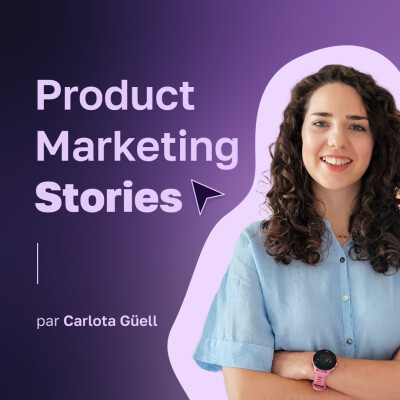
![From Adidas to Decathlon : How to foster brand preferance | Ashley Reid | Decathlon [HORS-SERIE] cover](https://image.ausha.co/Iq6Hwaa4OgFB02MTRnG4ERK1ABiwLgtwjmEYhwC3_400x400.jpeg)
